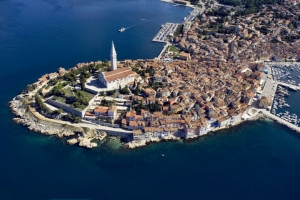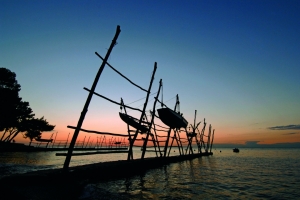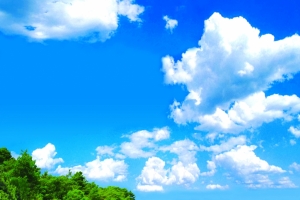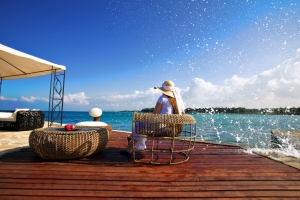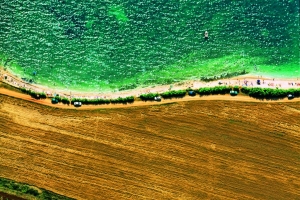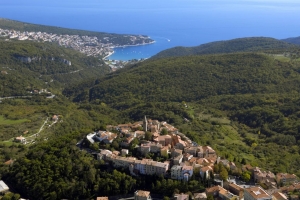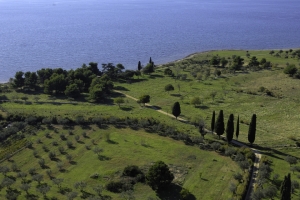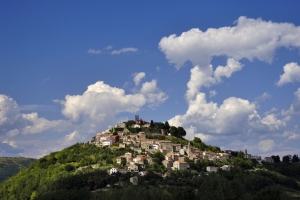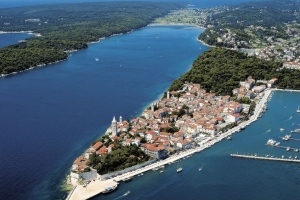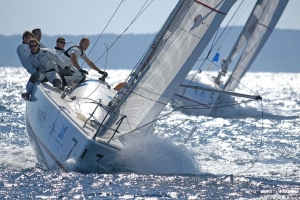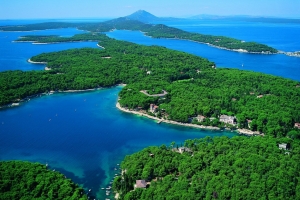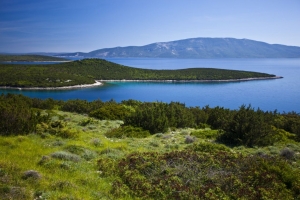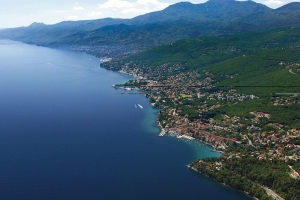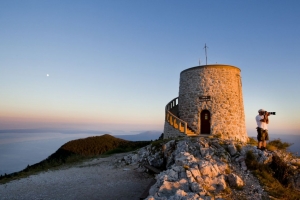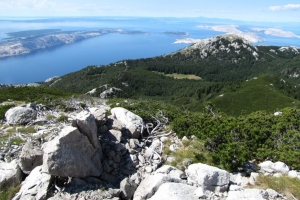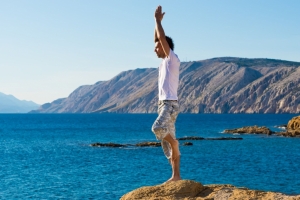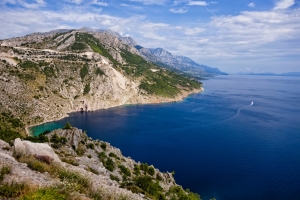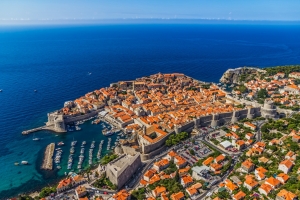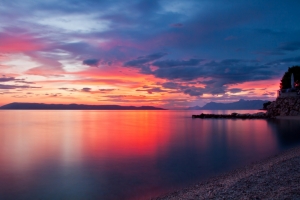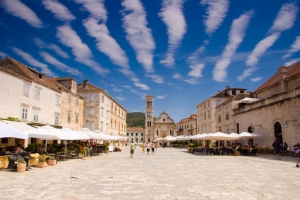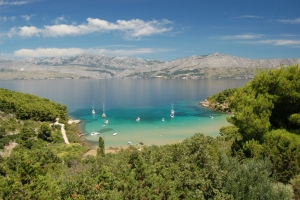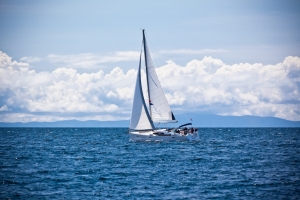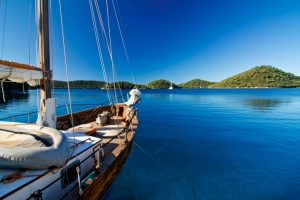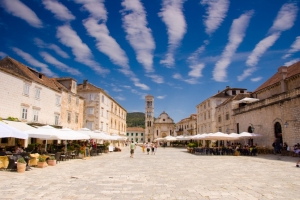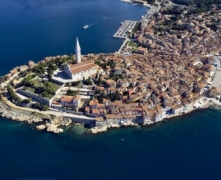

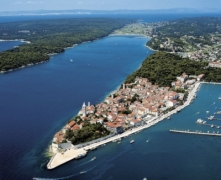



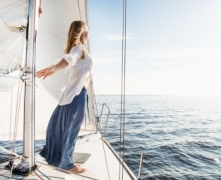

Climate in Istria



Istria's owes its unique location on the northern coastal region of Croatia for its special climate. This is the largest peninsula of the country and due to its expansion over the country, has different micro-climates which differ significantly from each other. Along the southern and western coast there prevails, in particular, a mild Mediterranean climate with warm, not too hot summers and mild winters. Sub-Mediterranean climate is a bit cooler, and happens in the northern and eastern coastal areas. As you get deeper into the Sub-Mediterranean climate, the climate and weather become increasingly influenced by the Dinaric Mountains, while the warm, moist maritime influences start to somewhat decline. Those looking to make trips to the center of the peninsula will be immediately confronted with the continental climate: in the summer it is hotter than right on the coast and colder in winter. Here, the climate strongly differs from the actual average annual weather conditions. When the bathing season in May / June starts, the average temperatures are still pleasant at an already 20°C, and in the peak daytime temperatures can reach 21-25°C. The water temperatures of 17-19°C might just be a bit too cold for the squeamish. It changes a bit in the height of summer when temperatures peak at around 29/30 ° C, the water heats up to a pleasant 24/25°C. Especially pleasant swimming conditions prevail in late August and early September. This is because it is still warm, but not hot and the water is still heated by the summer sun and the beaches begin to gradually empty. Nice weather In Istria, however, is no guarantee: Even in high summer, you can expect (with the summer rainfall to be rather short and violent) up to six days of rain per month. An advantage is that the number of rainy days in this part of Croatia are consistently, evenly spread apart over the year and sun does shine on relatively many days. The sun will even spoil you with its appearance in winter. Istria is a very convincing destination to visit all year round due to its mild climate and beautiful holiday weather.

Climate in the Kvarner Bay



The Kvarner Bay with its beautiful beaches offers beach lovers, in terms of climate and weather everything your heart desires. The bay and the Ucka mountain range in the hinterlands protects the region from cold air and weather extremes, thus spoiling visitors most of the year with sunshine and warmth. When it comes to the bathing season, it is long: From May to October water lovers and sun worshipers fill up the beaches of the region. In May only the bravest swimmers can withstand the around 16°C cold water, and the majority of tourists wait for the warmth of the hot summer months. Between late July and early September the temperatures rise to about around 30°C and the water temperatures peak at around 21-23°C, making for pleasant swimming conditions. August and September are considered the driest months of the year in the Kvarner bay. This is especially true on the coast, even though the coastal mountains may drop a rain cloud or two in midsummer. On the other hand the high altitudes, especially in summer, bring a welcoming change and cool down. Here it is a few degrees cooler than in the hot, continental climate hinterlands. The winter is relatively mild and rainy, so is, therefore, less suitable for bathing or walking holidays. Active vacationers will find the most ideal condition in the mild and mostly sunny transitional seasons.

Climate in Dalmatia
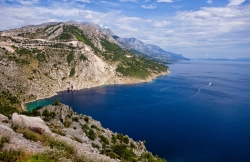


North, Central and Southern Dalmatia, the southern coastal regions of Croatia, have a relatively similar, subtropical Mediterranean climate with warm to hot summers and mild winters. Temperatures that reach up to 27°C in June are hot enough for many long splashes in the already pleasantly warm waters of the Adriatic which reach temperatures of around 21°C. Although April and May are also relatively warm, but because of the cooler water temperatures these months are excellent for doing sightseeing and walking tours. The hottest and driest days of the year happen in July and August when temperatures reach 30°C, which coincides with the most popular times for recreation-seeking water rats. Offshore winds blow refreshingly during the afternoon, making sure that the heat is bearable - even on very dry islands and the hinterlands. The winter months are still mild in comparison to the other coastal regions, despite being relatively cool and rainy. The best time to travel to Dalmatia depends on what type of activity you want to do between April and October. By the way: As of November, the precipitation has increased significantly - far more than in the coastal regions of Kvarner and Istria. Together with partly strong and long lasting case winds from the northern mountainous regions it can even be properly unpleasant in Dalmatia.

Blessing and a Curse: Croatia Winds



This beautiful setting between mountains, plains and sea that characterize Croatia also characterize the winds which have a large affect on the weather. Especially popular is the "fair weather wind" Maestral, which makes the greatest summer heat bearable and is at its strongest in July and August. The Maestral usually starts in the morning, then increases gradually until early afternoon and then subsides slowly. Sailors appreciate it, especially in Dalmatia, where it appears particularly strong and provides the perfect conditions for water sports.
Jugo, a warm wind from the south-east, is also known in the Mediterranean under the name of Scirocco, and brings not only warmth, but often also rain and overcast sky. These rainfalls occur mainly in the spring up until around June and can last up to a week. In contrast, the Bora occurs suddenly. The cold wind that suddenly collapses down from the Velebit, Biokovo and Mosor mountains to the sea is notorious because of its unpredictable gusts and high wind speeds. Sailors and airmen must be particularly wary of this wind. The good news: The Bora never stops blowing for long except for in the winter months and often brings good, clear weather. Almost as feared as the Bora are also the Lebic and Garbin. Two Southwest winds that bring dry air, but blow very violently and can cause dangerous cross waves, which sailors especially have to watch out for. The Lebic usually announces itself with a glowing sunset.

Why Best of Croatia ?
- Best Price Guaranteed
- No booking fees
- Thousands of satisfied customers
- Numerous objects with direct-booking option
- Intelligent search function with numerous useful filter options
- Extensive travel guide with lots of pictures and videos over 500 pages
- Detailed beach guide with more than 700 beaches







 Best of Croatia
Best of Croatia









